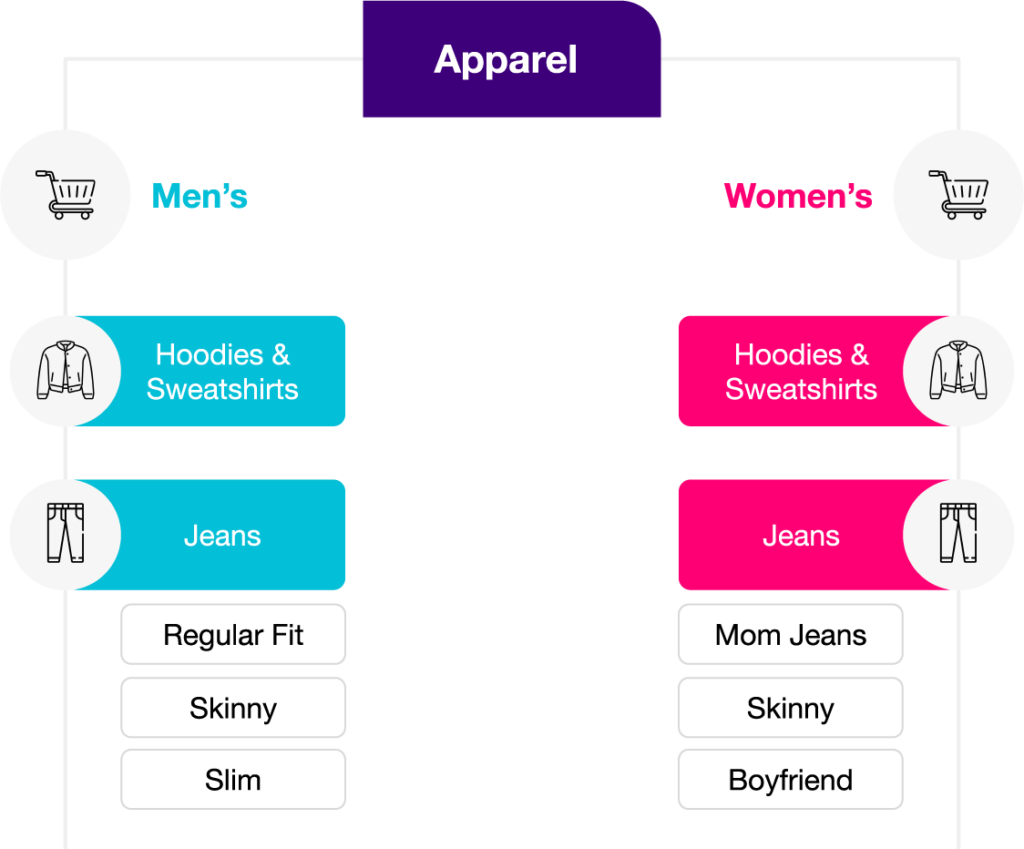Industry Knowledge
From Brick-and-Mortar to Click-and-Mortar: The Reimagined Future of Retail
TaskUs’ experts for Retail and eCommerce, Bailey Boyd and Paul Solomon, help Us navigate the complicated future of retail.
From mom-and-pop stores to virtual shops—retail encounters a breakthrough technology ever so often, disrupting the way we purchase goods. This is the future of retail as a whole, and global leaders, consumers, and analysts alike know it.
In the post-COVID era, retail is entering a period of rapid convergence as the boundaries between brick-and-mortar and online quickly dissolve. So we asked the experts, TaskUs’ leaders for Retail and eCommerce, Bailey Boyd and Paul Solomon: “What does the future of retail hold, and how can retailers position themselves for success in this era of rapid convergence?” From the rise of metaverse shopping to the exciting boom of augmented reality, explore the future of the retail industry with Us.
1. What will be the most significant growth catalysts in retail sales in the next couple of years?
While the overall retail sector is clouded with uncertainty, experts generally agree that the future of retail will exhibit continued growth in the eCommerce sector in 2023 and beyond. Solomon is particularly looking forward to the growth of in-app food and beverage purchases.
WHITE PAPER
Food For Thought: How AI Powers Food Delivery for Better Gastronomic Experiences
Download WhitepaperIn addition to interest hikes, inflated prices, and supply chain woes, what else do you see as challenges for retail companies in the near future?
Boyd agrees that retailers are under a mountain of pressure in today’s world.
Customers want the best products at the best prices with free shipping and convenient returns. More and more customers are becoming conscious shoppers, meaning that they're really starting to pay attention to how and where products are made, and what impact they have on the environment. Not to mention, the future of retail presents product choices that are endless.
Bailey Boyd
According to Boyd, customers will start going to brands that offer the best experiences and fulfill their increasingly diverse demands.
Solomon also adds that the future of retail will be full of increasingly complex cybersecurity risks. Bad actors continue to seek ways to outmaneuver the emerging measures created to limit their impact, which is why retailers must continue to increase their efforts to protect their businesses and customers from these trends of fraud. The implementation of electronic Know Your Customer (eKYC technology) through advanced algorithms and machine learning remain as the backbone to fight financial crime patterns and fraudulent activities. Adapting such technology boosts better efficiency and accuracy to help customers gain a safe and secured shopping experience.
Another challenge is addressing review bombing. Review bombing is generally defined as an internet phenomenon where multiple users coordinate the spread of a mass of targeted fake reviews across social media platforms, with the sole purpose of presenting a business in a negative light. Implementing strict policies and guidelines and creating an automatic flagging system are some of the ways to mitigate possible reputational risk.
2. How will social media platforms continue to evolve how people shop?
Brands in social media will undoubtedly continue to seek ways to generate revenue, whether through their platform or advertising. According to Solomon, consumer marketplaces will soon be embedded in social media platforms, leveraging users who are geographically close to one another. Advertisements will also increase in frequency across platforms with the possibility of better and more accurate targeted ads.
3. In what ways will augmented reality (AR) or the metaverse impact the retail industry?
Boyd sees augmented reality as “just another way to engage your digital shopper and bring them closer to completing the purchase process.” Grocers and food and beverage retailers may not have a clear use case for AR yet, but she believes it can play a significant role in boosting the customer’s purchasing decision. With AR, customers can visualize how a product might look in their homes, on their walls, or even on their skin.
As for the metaverse, a lot remains unknown in terms of its market size, but there’s a strategy waiting to be fleshed out there. The metaverse will be another way for customers to express themselves, engage with a brand, and boost brand exposure.
One of the obvious benefits of AI is making work more efficient, especially in generating substitute product recommendations. What are other specific examples in retail where we see potential collaboration between human intervention and intuitive technology?
AI is set to transform the retail industry in countless ways, such as product categorization. AI-powered product categorization tools can help automate and streamline the process, saving time and improving the accuracy of personalized content, which then translates to better customer experiences. Solomon agrees to this trend, as he imagines that online shopping in the future will feature AI making fully tailored suggestions based on the customer’s previous shopping behaviors.

As an example, Solomon describes what grocery shopping can be like. As the customer returns to the store to shop, he may receive prompts of items he usually purchases—also taking into consideration things like expiration dates or new products to try—making his weekly grocery shopping experience faster and more enjoyable in this future of retail.
Boyd adds another example of AI in retail that includes more advanced measures against security threats and bad actors. While many automation tools can flag suspicious behaviors such as abusing promo codes or fake new memberships, at the end of the day, brands need to have a human in the loop to make those subjective, more complex decisions that AI can’t.
4. What about the future of retail stores? What strategies can drive customers’ attention and traffic back to brick-and-mortar stores?
If a retailer is already offering an online channel, there are several things to keep the customer engaged both online and offline. According to Solomon, the brands need to be able to combine the shopping histories of both online and offline channels. This means features like:
- Loyalty programs that work in-app and in-store
- Order online and pick up in person
- Order online and return in person.
These days, consumers shouldn’t have to keep track of their receipts and should have the flexibility to mix up their shopping preferences.
Consumers realize that there could be differences in pricing in these channels, and that should be acknowledged upfront by the retailer.
Paul Solomon
Brick-and-mortar stores will thrive if they provide a seamless retail customer experience that addresses buyer nuances like this.
5. How can brick-and-mortar retailers improve their online experience?
Boyd emphasizes that it’s all about creating a seamless customer experience, which requires brand consistency in every channel. But to do that, brands need to know who they really are: “What’s your voice? How do you want to make the customer feel? How do you speak to your customers?”
Once you are clear about who you are and what your brand is for your customers, you can easily replicate this in every touch point your customers have with you.
Another tip is having the right tools and an omnichannel retail strategy to track your customer’s journey. This is essential for frontline employees who need information on the customer’s history with your brand to make assisting them even more efficient and effective. Creating a complementing yet unifying roadmap of retail support services can create a deep understanding of your customers’ profiles and transform them into brand advocates.
6. Customers are becoming more eco-conscious with their purchases. How can brands help drive sustainability in retail?
Retail sustainability is becoming increasingly important for today’s modern shoppers, and the future of retail will include more customers inquiring about a brand’s sustainability initiatives and policies as they shop. Solomon advises that “Representatives of those companies need to be prepared to provide that level of insight and guide the consumers towards the products and services that align with their preferences.”
Additionally, brands should also ensure that these items are easily identifiable, sustainably produced, packaged, and fulfilled.
7. From self-service options to interacting with chatbots—what trends can we look forward to in the near future?
Boyd believes that retail of the future will continue to focus on video and AR. During the pandemic, brands started leveraging livestream shopping to educate and engage consumers, and this trend has continued growing. Live streaming also added a new dimension to shopping reviews, allowing customers to see the product from the perspective of other shoppers.
On the other hand, AR will help customers make better, faster, and more informed decisions as it allows them to envision the product on hand.
Outsourcing for the Future: Helping Brands Thrive Today and Tomorrow
The future of retail and eCommerce is full of exciting possibilities, but it also presents unique challenges for brands and retailers. With the rise of eCommerce and the proliferation of digital channels, companies must be ready to meet customer expectations at every turn, from lightning-fast shipping and responsive customer service to personalized shopping experiences and seamless online-to-offline integration.
One way to tackle these eCommerce challenges head-on is through eCommerce outsourcing with a trusted partner like TaskUs. Brands work with Us for our deep expertise in end-to-end support services, helping them navigate complex omnichannel integrations, customer experiences, and risk and response measures.
Recognized by the Everest Group as the World’s Fastest Business Process (Outsourcing) Service Provider in 2022 and highly rated in Gartner Peer Insights Review, TaskUs is a bionic company ready for the future of the retail industry. Blending human + tech solutions through bionic outsourcing, we help you navigate shifting economic conditions and evolving customer needs while remaining true to our core values and our proven formula: creating Ridiculously Good experiences.
References
We exist to empower people to deliver Ridiculously Good innovation to the world’s best companies.
Services








